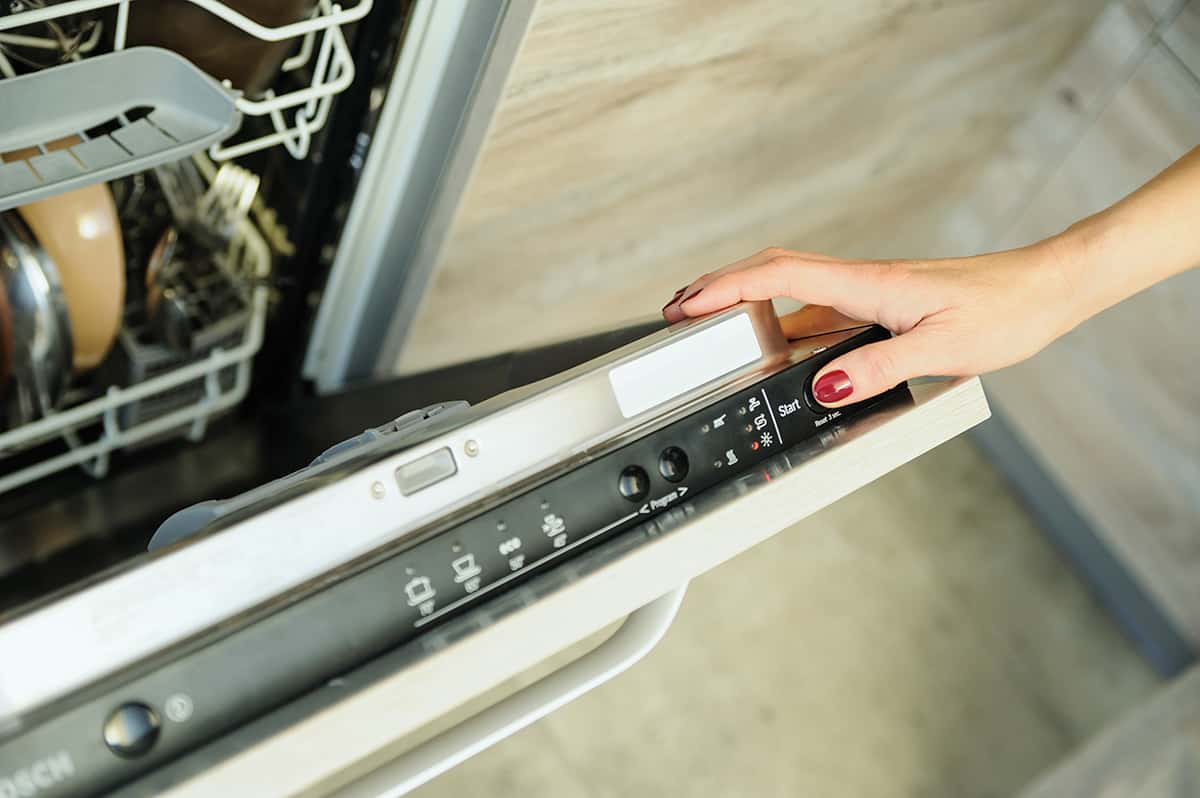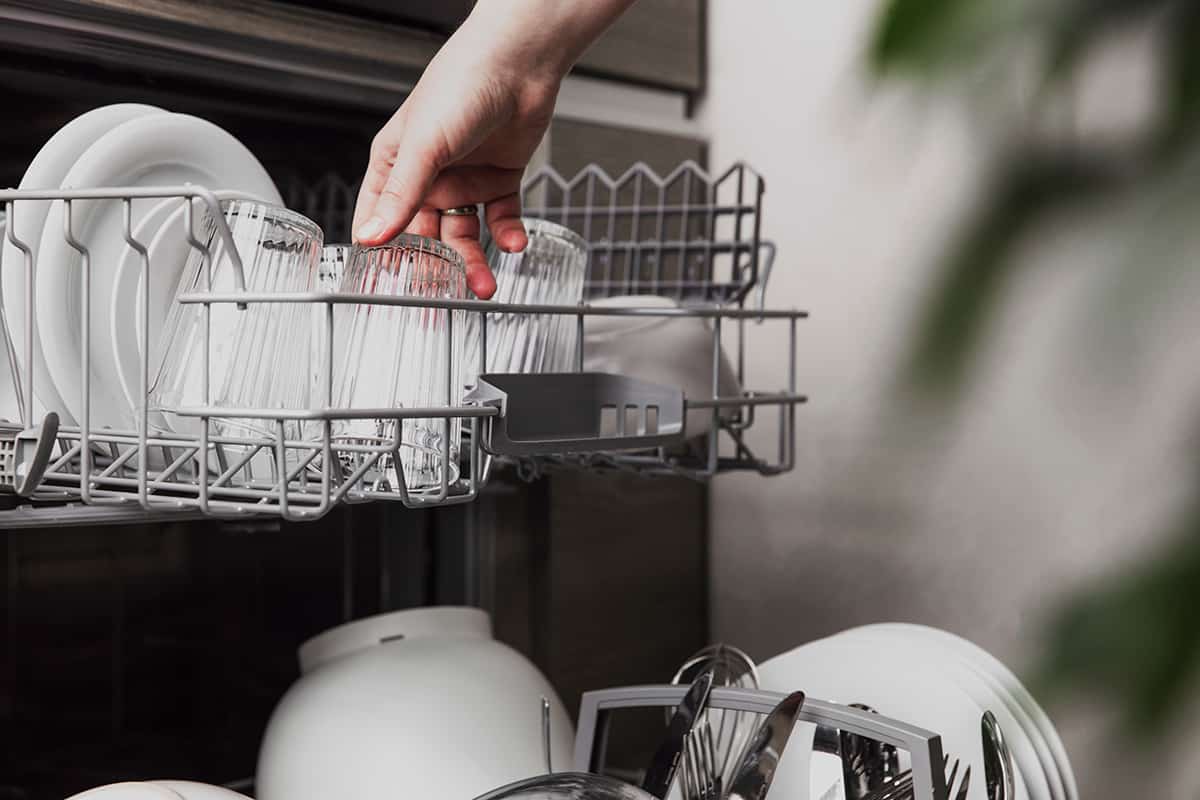Just like most other products, dishwashers come with a date code to let you know exactly when it was manufactured. Using this information will tell you whether your appliance is new or old and where you can find the manufacturer’s warranty information.
If your dishwasher has been used for a while, then it’s likely gotten some wear and tear that might need to be addressed down the road.
Being able to visually examine its interior components gives you an idea of how well it is holding up over time, allowing you to make more informed decisions about whether repairs are necessary now or in the future.
Ho to Tell A Dishwasher Age
Look for the model and serial number

You can get an idea of your dishwasher’s age without calling a technician by looking up the model number on your dishwasher and searching for that specific model online.
Check all around your dishwasher to find if there are any details about your dishwasher model.
- Look for a sticker on the door.
- Look for a sticker on the bottom of the dishwasher.
- Look for a sticker on the front of the dishwasher.
- Look for a sticker on the side of the dishwasher
Does it say anything about when it was made?
Check Where the Dishwasher Is Installed
If you’ve been using your dishwasher for a while and are wondering how old it is, the first place to check is the installation date.
The local appliance store may have records of when their appliances were sold, but if not, try searching through Facebook groups dedicated to your area’s used appliance stores (or search “used appliance” in your app store).
If they don’t have that information either, you can look at the manual or warranty information that came with your machine. The model number and serial number should tell you exactly which brand of product it is and when it was manufactured.
Look for A Manufacturing Date Code

If you own a dishwasher, there’s a good chance that it has a date code. These codes are usually found on the back panel of the machine and are in the form of a year followed by one or two letters. For example, if your dishwasher is stamped with “2012MM,” that means it was made in 2012 and has no month specified (M).
If you’re still unsure as to when your dishwasher was manufactured, try searching for its model number online. You can also contact your local appliance store or manufacturer to see if they had any records regarding production dates.
Get an Estimate from A Repair Technician
When you need to get a repair estimate on your dishwasher, the easiest way is to call a repair technician. They’ll come to your home and take a look at your dishwasher, then give you an estimate of how much it will cost to fix it.
If you like their price and want them to perform the work, they can do so right away (or schedule an appointment for another day). You might be able to find these technicians by searching online or asking friends for recommendations.
When calling these professionals, make sure that they are licensed and insured—this means that if anything goes wrong during their visit or after their visit has ended, they should be responsible for paying any damages themselves.
The person who answers the phone should be able to provide proof of this licensing; if not immediately available upon request by name-dropping other reputable businesses with whom they work closely.
What Happens to a Dishwasher as It Ages?

So, what causes a dishwasher to start acting up? Is it just old age? Or could this be the result of some physical damage or wear and tear? There’s no doubt that all appliances will eventually break down due to old age.
But sometimes, there are warning signs that your dishwasher is on its last legs (or perhaps already dead in the water). Here are some problems that can arise as your trusty appliance ages.
The Dishwasher’s Dirty Pump and Filter Have to Work Harder and Harder
As your dishwasher ages, the pump and filter have to work harder and harder to keep it clean. As food particles build up in them over time, they are unable to be removed from your dishes. Eventually, this buildup will make it impossible for these parts of the machine to function properly—and you’ll need to replace them.
The Heating Element Can Go Out
The heating element is the part that heats the water in your dishwasher. It can burn out, get clogged, broken, cracked, or corroded. You probably won’t be able to tell if your heating element is working properly until it breaks completely.
You Can Get Flooding
As soon as you see water leaking out of the bottom of your dishwasher, turn off the power to it and unplug it. Remove any food items or dishes from inside before turning the machine back on and running an empty cycle with hot water.
This will help to clear away any grease buildup or debris that may be contributing to this problem so that you can get back to normal use without worrying about further issues arising from clogged drains or other problems related to flooding in your home appliances like washing machines and dryers.
Your Dishwasher May Smell Bad
Dishwashers are great at cleaning your dishes but not so good at keeping them clean. Over time, food particles will build up in the drain and on the bottom of your dishwasher. This can lead to a bad smell coming from your dishwasher.
You can remove the drain and clean it with a brush. You can also use a cleaning solution. If you don’t want to remove your drain for cleaning, you can also use vinegar or baking soda (mix them together).
When to Look for A Replacement
The average lifespan of a dishwasher is about 10 years, although this can vary depending on the brand. If you’ve had yours for less than 7 years, expect to pay between $150 and $400 for parts and labor if it needs repairs. The cost of disposing of your old machine will range from $50 to $200, depending on its condition and where you live.
If you decide to replace instead of repair, expect to spend anywhere from $300 for an entry-level model with limited features up to $1,000 or more for high-end models that boast stainless steel tubs and advanced controls.
But even if repairing your current unit costs less than purchasing a new one—which it often does—it might be worth replacing anyway because repairing older machines is not always easy or possible: some have components that are no longer available from manufacturers or have become obsolete over time (such as when newer technology takes over).
For example, your dishwasher’s power supply might have been damaged by lightning during Hurricane Harvey last year. It was repaired by an electrician at the cost of around $800 plus tax; but now there’s another problem with it—namely that water keeps leaking onto your kitchen floor whenever the door closes too hard after washing dishes.
Then you probably would want something else because fixing this problem alone would likely require tearing apart part of the cabinet underneath where all those wires go through into other rooms like bedrooms etcetera so as not to cause further damage elsewhere in the house. Plus, find out whether they’re still available at all since companies change models every few years anyway!






